
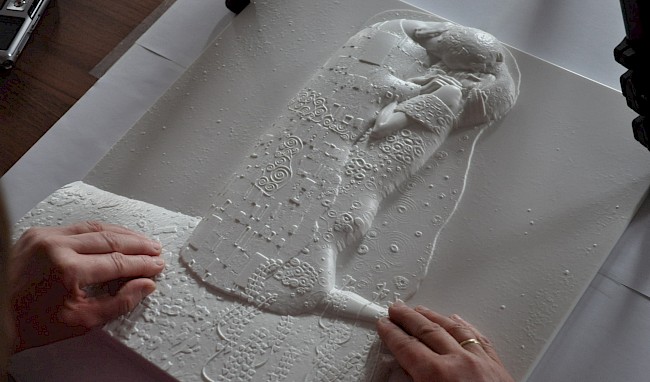
Especially in a country like Austria, where art and cultural heritage play an enormously important role in society, the question of how to make art accessible to all audiences is crucial. This is why we have been researching new inclusive ways of making art accessible and enriching for all museum visitors through Key Enabling Technologies. Over the past two decades, we have developed several innovative solutions for museums and built a broad network in the field of inclusive digitization.
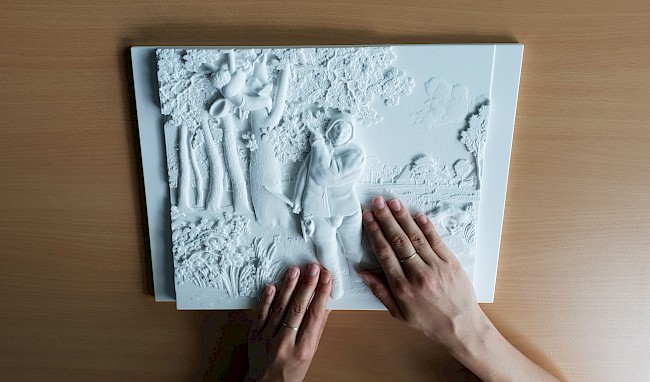
VRVis has been researching and developing inclusive solutions for art and culture for over a decade. In order to make art accessible to visually impaired and blind people, VRVis has developed a software-based method that uses 3D scans or photographs of artworks to convert them into digital 2.5D models. These digital models serve as templates for tactile reliefs, which are milled from various materials, such as the durable Corian. The tactile reliefs are characterized by high quality despite low production costs. They offer even the smallest details of the artwork as tactile subtleties and open up new dimensions of art experience for museums and the culturally interested public.
VRVis has already produced over 30 tactile reliefs for more than 15 renowned European museums, such as the Belvedere, the Kunsthistorisches Museum Vienna or the Victoria & Albert Museum in London.
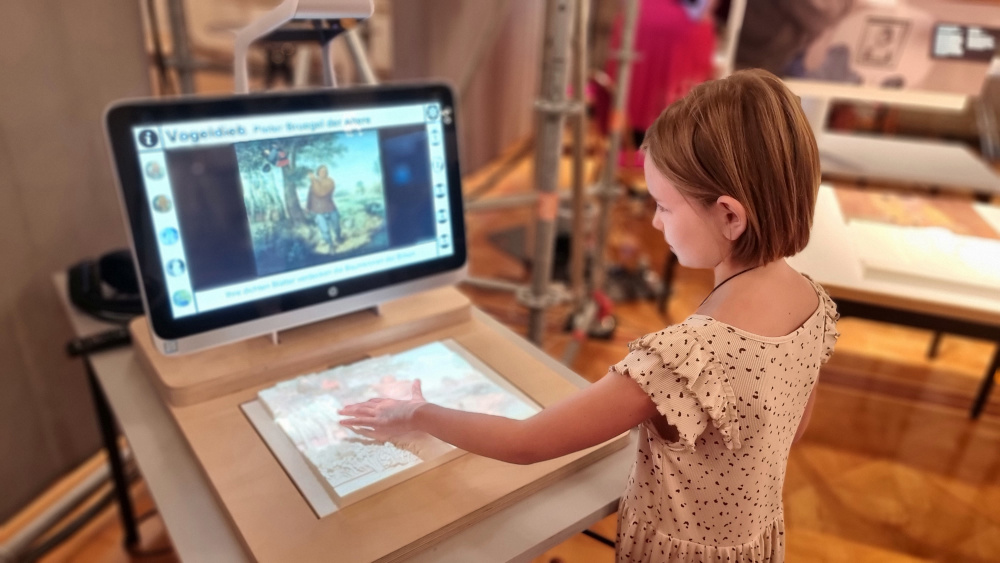
As part of the EU-funded Horizon2020 project ARCHES, coordinated by VRVis, we developed the interactive multimedia guide for museum objects, which is an inclusive art education tool that interlinks the senses of sight, touch and hearing. The interactive multimedia guide for museum objects is currently being further developed in the EU-funded project Beaucoup and tested especially for use by an older target group.
The technical setup is an HP Sprout with touchscreen and depth camera, which offers multimedia content at the simple point of a finger as a supplement to tactile reliefs. This includes sign language videos, audio files, subtitles, soundscapes, animations or special color projections that, for example, show different stages of a painting's development. The Multimedia Guide is characterized by a wide range of low-threshold and intuitively understandable interaction options, a human-centered solution that enriches modern museums.
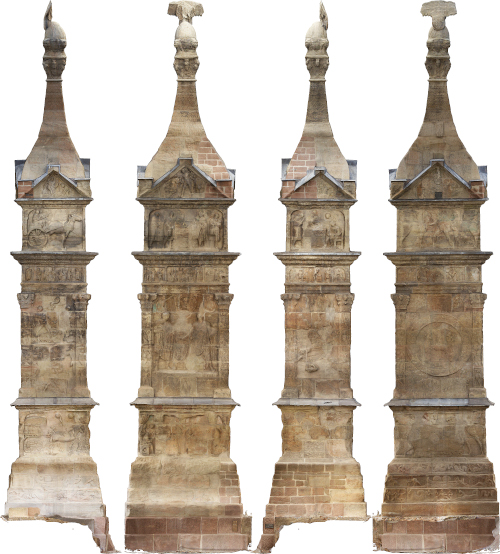
The preservation, monitoring and maintenance of old building structures, which are often part of cultural heritage, is an immense task. Together with Linsinger Ziviltechnik, we have investigated and developed methods that enable the most efficient and precise stocktaking, identification and documentation of changes to buildings: digital preservation. Photogrammetric methods are used to create high-resolution 3D models from a wide variety of image material of an object. These models show the condition of the building structure much more accurately than visible to the naked eye.
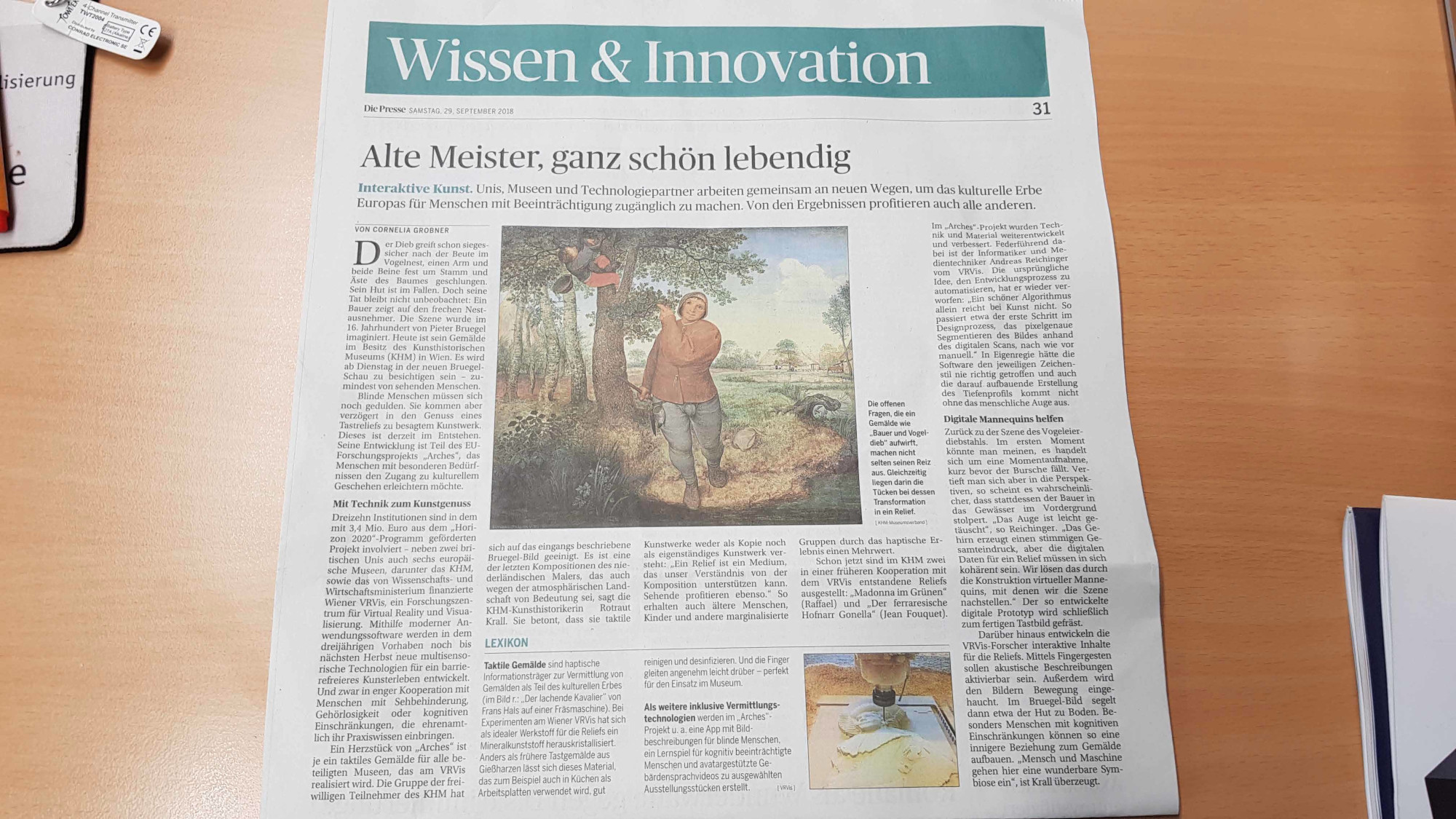
German media only:
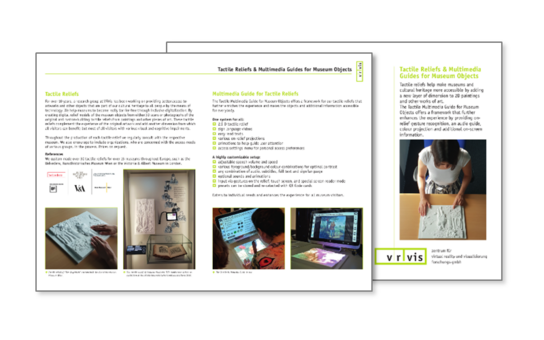

With its interactive multimedia guide for museum objects, VRVis has made it onto the shortlist for the global World Summit Awards (WSA) 2023.

VRVis researcher Andreas Reichinger wins the WSA Austria 2023 in the "Culture & Heritage" category for his established, innovative applications in the field of inclusive digitalization.

To enable people to live an economically, ecologically and socially sustainable life, applications by VRVis contribute to 10 of the 17 Sustainable Development Goals (SDGs). Due to this, VRVis is now nominated for the Austrian SDG-Award.

VRVis was invited to present its workflow for a digital, interactive exhibition archive for Schloss Trautenfels in this year´s IÖB Challenge.

Tactile panorama relief received IIID Award 2023

The inclusive tactile panoramic relief, developed and designed by VRVis for the Graz Museum Schlossberg, was awarded the Universal Design Award 2023 in three categories.

VRVis researcher Katharina Krösl received an Honorable Mention at the IEEE VR 2022 for her dissertation "Simulating Vision Impairments in Virtual and Augmented Reality."

The paper "Neural Cameras: Learning Camera Characteristics for Coherent Mixed Reality Rendering", which was written with VRVis participation, was awarded the Best Conference Paper Award at ISMAR 2021.

Our VR/AR specialist Katharina Krösl was awarded the Young Experts Award of the Austrian Computer Science Day 2021.

ARCHES was selected from nearly 400 projects from all over the world as one of the finalists in the category "Inclusion & Empowerment".

The EU project ARCHES is nominated for the Heritage in Motion Award 2020.

Horizon2020 project "ARCHES" receives Austrian WSA Award 2020 for the use of key enabling technologies in barrier-free art education.

The Horizon2020 project ARCHES, coordinated by VRVis, was shortlisted for the Horizon Impact Award from more than 200 projects.

The Horizon2020 project ARCHES coordinated by VRVis convinced the jury in the category "Social Affairs".

Katharina Krösl won the Best Research Demo Award with the live demo of her project "XREye".

VRVis receives together with the Kunsthistorisches Museum Vienna the Zero Project Award 2020.

The EU-funded participatory research project "ARCHES" was awarded the eAward 2020.

VRVis is represented in the categories "Social Responsibility" and "Smart City and Infrastructure".

Paper "ICthroughVR: Illuminating Cataracts through Virtual Reality" by Katharina Krösl is nominated for the Best Conference Paper at the IEEE Virtual Reality conference, which takes place from 23 to 27 March 2019 in Osaka (Japan)!

VRVis wins the eAward 2019 for the project VR Fire Safety Training in the category "Training".

The eAward honors IT projects with the greatest customer benefit. The VRVis is nominated in three categories!

VRVis receives the Eurographics Association 2011 Best Paper Award for the paper "High-Quality Tactile Painting".

Innovation award for "Tactile Paintings" to VRVis and KHM Vienna.
Innovation award for "Tactile Paintings" to VRVis and KHM Vienna.
State Prize of Austria for "Tactile Paintings" goes to VRVis and KHM Vienna.

VRVis and dsts advisers to executives KEG received the "eAward 2011 Lower Austria" for their project "Virtual Reality Biofeedback Training.

During the Long Night of Research 2008 VRVis was awarded the prize for "Outstanding Science Communication".

VRVis and the Science Visualization Lab at the University of Applied Arts Vienna want to provide artists and cultural institutions with a new option to present digital creations in immersive settings. ARTverse aims to build an open platform for art production, teaching and dissemination in VR.

VRVis developed together with the Museum Graz a new tactile panorama relief for the unique view from Graz's Schlossberg.

The Beaucoup project's multisensory, inclusive toolsets enable barrier-free exploration of and interaction with cultural heritage targeted at older adults.

The research project CognitiveXR focuses on developing a platform that enables cognitive augmentation in the smart city domain by seamlessly integrating augmented reality, edge computing, and artificial intelligence.

The virtual reality solution developed by VRVis in collaboration with the Vienna State Opera enables digital collaborative stage design and construction rehearsal processes - independent of the actual stage space.

The CosmoWeather research project aims to develop VR and AR solutions for experts and the general public to make the research field of space weather more accessible and understandable.

Development of extended reality technologies to create virtual maneuver scenarios based on real geographic data.

The INDIGO research team is systematically documenting the graffiti on Vienna's Donaukanal, using these photos to create a digital twin of the walls. VRVis is currently contributing its technological expertise to the project.

The applied research project Lightbox 2.0 focuses on the development of a photogrammetric 3D scanner for automatic and deep learning-based modeling of all kinds of keys.

ARCHES - Accessible Resources for Cultural Heritage EcoSystems was an EU-funded Horizon2020 project coordinated by VRVis.

Fire training for non-professionals is expensive, complicated and dangerous. The solution: a simulation in a virtual environment.

Visualization and visual analysis of high-resolution surface reconstructions find a wide range of applications, from tunnel monitoring and archaeological excavations to the change management of cultural heritage buildings.

Barrier-free access to art and museums for blind and visually impaired people through 3D technology.

Localization of Virtual Sound Sources: Effects of Pointing Method, Visual Environment, and Training.

In order to preserve the architectural heritage, we use methods of photogrammetry, thermography, photometry as well as laser scans to carry out inventories, recognition and documentation of changes in protected buildings.